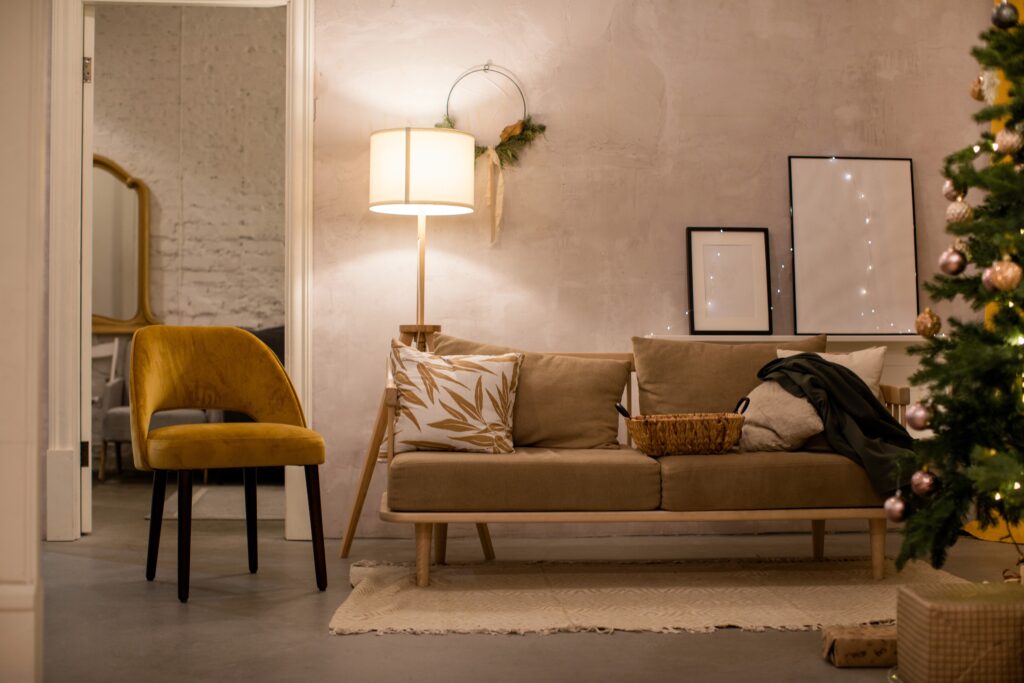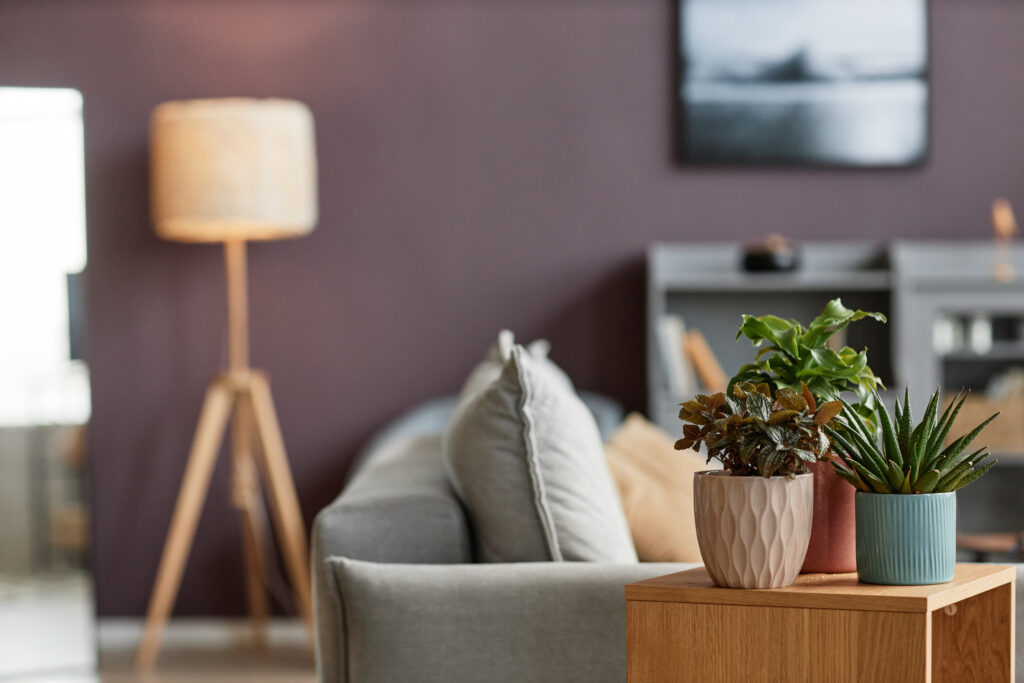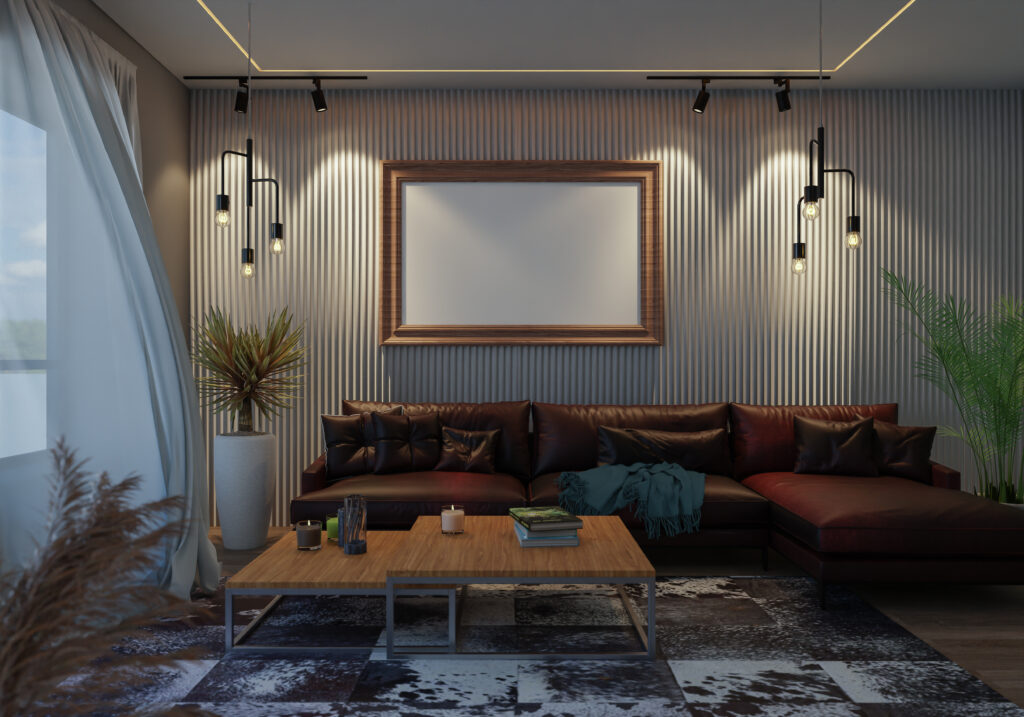How Lighting Can Transform and Enhance Your Furniture
Lighting plays an essential role in interior design and space planning. Much more than just a source of light, it has the power to highlight your furniture, accentuate its textures and colors, and create the right ambience for each room.
Choosing the right lighting to enhance your furnishings requires an understanding of the different options available, from accent lighting to natural light and modular systems.
Accent Lighting: Illuminating Your Furniture and Works of Art
Accent lighting is perfect for highlighting key elements of your décor, such as a designer table or a work of art.
This type of lighting uses spotlights or accent lamps to create a focal point in the room, immediately drawing the eye.
In a living room, for example, recessed spotlights directed at a specific piece of furniture highlight its details and finishes.
If you’re wondering what’s the best lighting for a living room, it’s important to combine different light sources. Floor or accent lamps that provide indirect lighting can create a soft, welcoming atmosphere, while adding a designer touch to your room.
Accent lighting is ideal for this type of use, as it highlights your furniture while adding depth to the space.
Color Temperature: Highlight the Textures and Materials of Your Furniture
Lighting color temperature has a major impact on the perception of the materials and textures of your furniture. Warm light (around 2700K to 3000K) is ideal for highlighting natural materials such as wood, leather or fabric.
It creates a warm, comfortable ambience, perfect for relaxation areas such as the living room or bedroom.
On the other hand, a cool light (4000K to 5000K) will better highlight smooth, contemporary surfaces, such as metal or glass, and is more suited to modern, functional spaces.
By choosing the right color temperature, you can accentuate the textures of your furniture and create the desired atmosphere. If you opt for too cool a light in a room dominated by natural materials, you risk losing the warmth of your furniture. Conversely, too much warm light in a modern space can detract from the sleek aesthetic of your metal or glass furniture.
Maximize Natural Light to Enhance Your Furniture
Natural light is one of the best ways to make your furniture stand out throughout the day. To maximize this light, it’s essential to position your furniture in relation to the windows.
For example, placing a table or sofa near a source of natural light brings out colors and textures in subtle ways.
What’s more, natural light changes throughout the day, creating mood variations that highlight different facets of your furniture.
It’s also important to choose curtains or blinds that let light in without blocking it out. Curtains, for example, diffuse light evenly while avoiding harsh shadows. For wood or fabric furniture, soft natural light provides a natural glow without altering colors or textures.
How to Choose Lamps that Highlight Your Furniture
When it comes to choosing the right lighting for your interior, it’s crucial to strike a balance between functionality and aesthetics. Lighting fixtures such as pendant lamps, floor lamps or wall sconces are not only designed to illuminate, but also to complement the aesthetics of your space.
For example, a pendant above a dining table can both illuminate the room and add a design element to the furniture.
The five types of lighting to consider when lighting a room are ambient, accent, task, decorative and natural.
By combining these different types of lighting, you can not only meet your functional needs, but also create a coherent ambience that highlights your furniture.
It’s also important to choose lamps that match the style of your furniture.
For a modern living room, a brushed metal floor lamp or a minimalist pendant will be perfect. In a more traditional room, lamps with fabric shades or brass sconces will add a classic touch while effectively illuminating the space.
Modular Lighting: Adjust the Light for Every Room
Modular lighting is an excellent way of adapting brightness to every situation. With systems such as dimmers or intelligent lights, you can adjust the light to suit the use of the room.
For example, in a dining room, you can opt for a brighter light at mealtimes, then dim it to create a relaxed atmosphere after dinner.
What’s more, smart lights allow you not only to modulate the intensity, but also to change the color temperature to suit your preferences. Whether you want to highlight a particular piece of furniture or adjust the lighting for a special event, modulable lighting gives you total flexibility.
This type of lighting is particularly useful for multifunctional rooms, such as the living room, where the light needs to adapt to different activities throughout the day.
Conclusion: Lighting, a Key Element for Enhancing Your Furniture
Lighting isn’t just a functional tool, it’s a real ally in transforming and enhancing your furniture. Whether it’s accentuating a centerpiece or adjusting color temperature to reveal materials.
Use modular systems to adapt the atmosphere, and choose your lighting carefully to create a harmonious, aesthetically pleasing space.
By optimizing both natural and artificial light, you can truly enhance any room in your home.
Thank you for reading
At SGL Furniture, we’re committed to delivering a quality finished product that meets your expectations. Contact us to submit your project!
See you at the next blog!
Follow us on Facebook and Instagram!



